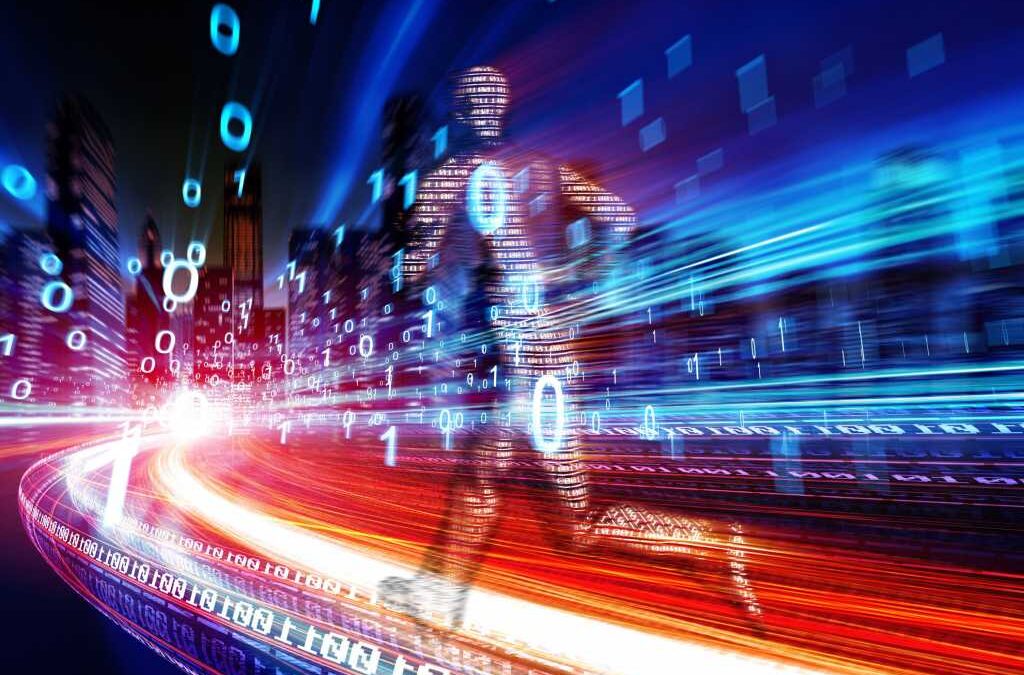Autonomous Agents in Sports Analytics: Enhancing Performance Through Advanced Data Insights
Imagine it’s game day. The stadium roars with excitement. Behind the scenes, digital teammates are hard at work. These are autonomous agents, changing the game of sports analytics faster than a record-breaking sprint.
Autonomous agents in sports analytics are like super-smart, tireless assistants. They crunch numbers, spot patterns, and deliver game-changing insights in real-time. Coaches no longer rely solely on gut feelings. AI-powered agents provide a deeper understanding of the game, giving teams an edge they never had before.
This article delves into the fascinating world of these digital sports gurus. We’ll explore how they’re transforming key areas like:
- Performance optimization: Helping athletes reach their peak
- Injury prevention: Keeping players safe and on the field
- Tactical analysis: Outsmarting the competition
- Player tracking: Following every move to improve gameplay
Get ready to see sports in a whole new light. These AI agents aren’t just changing how we analyze the game—they’re transforming how it’s played. Let’s kick off our exploration of autonomous agents in sports analytics and discover how they’re shaping the future of athletics.
Enhancing Performance Optimization
Autonomous agents are transforming how teams and athletes optimize their performance by leveraging vast datasets and sophisticated algorithms. These AI-driven systems offer unprecedented insights into player and team dynamics.
One significant advantage of autonomous agents is their ability to deliver real-time feedback. Coaches no longer need to rely solely on intuition or post-game analysis. These intelligent systems process enormous amounts of data instantaneously, providing actionable insights during training sessions and live competitions.
For example, player tracking technology in professional soccer allows autonomous agents to analyze a player’s movements, speed, and positioning in real-time. By comparing this data to historical performance metrics and team strategies, coaches can make immediate tactical adjustments or provide targeted feedback to players, potentially altering the course of a game.
These AI systems also transform training regimens. By continuously monitoring an athlete’s performance data, autonomous agents can identify patterns and trends that might be invisible to the human eye. This includes detecting early signs of fatigue, highlighting areas for skill improvement, or even predicting potential injuries before they occur.
The impact extends beyond individual performance. Autonomous agents can analyze team dynamics, assessing how different player combinations affect overall performance. This level of insight enables coaches to optimize lineup decisions and develop more effective game strategies.
Autonomous agents in sports are like having a team of expert analysts working 24/7, providing insights that can make the difference between victory and defeat.
The future potential of autonomous agents in sports performance optimization is vast. From personalized training programs to real-time strategy adjustments, these AI-driven systems empower coaches and athletes to push the boundaries of human performance.
The era of data-driven decision-making in sports has arrived, changing the game in ways we’re only beginning to understand.
Injury Prevention and Recovery


Artificial intelligence is changing the way athletes train and recover from injuries. By harnessing data, AI-driven systems can predict and prevent potential injuries before they happen. These intelligent algorithms analyze extensive biomechanical and workload data to accurately identify injury risks.
For instance, sensors can monitor an athlete’s movement patterns during training, highlighting any abnormalities that could lead to strain or overuse injuries.
AI goes beyond just prediction; it also creates personalized training programs tailored to each athlete’s unique physiology and risk factors. The era of one-size-fits-all approaches is over. Now, AI determines the optimal training load, recovery time, and exercises needed for peak performance and effective injury prevention.
If injuries do occur, AI plays a vital role in speeding up the rehabilitation process. By assessing an athlete’s progress in real-time, these systems can adjust recovery plans as needed, ensuring a safe and efficient return to play. AI actively works to keep athletes healthy and performing at their best.
The benefits of AI in sports medicine also extend to teams and organizations, which are experiencing notable improvements in player availability and career longevity. For example, the Philadelphia 76ers partnered with an AI platform and saw a significant decrease in games missed due to injury. As AI technology continues to evolve, we can expect even more advanced tools for injury prevention and recovery.
The future of sports may involve a scenario where career-ending injuries are rare, thanks to the vigilant support of artificial intelligence.
Tactical Analysis Using AI


A digital figure sprinting through a binary landscape. – Via i-laps.com
Artificial intelligence is transforming how teams approach tactical analysis in sports. By leveraging AI, coaches and analysts can extract valuable insights from vast amounts of game data that would be impossible to process manually. This technological advantage is reshaping how teams prepare for and adapt during competitions.
AI-powered systems analyze both historical and real-time game data to identify patterns and trends in player and team performance. These systems can examine everything from player movements and ball possession to shot selection and defensive formations. The detailed insights generated help teams develop more effective strategies that exploit opponents’ weaknesses while maximizing their own strengths.
A key advantage of AI in tactical analysis is its ability to process information and provide recommendations in real-time during games. As the play unfolds, AI can detect shifts in momentum or strategy and suggest tactical adjustments to coaches. This allows teams to be more responsive and adjust their approach on the fly based on what is happening on the field.
For example, an AI system might notice that an opposing team is consistently exploiting a specific area of the field to create scoring chances. It could then recommend defensive adjustments to address that vulnerability before the other team scores. Alternatively, it may identify that a particular offensive play is proving especially effective and suggest running it more frequently.
Beyond in-game applications, AI also enhances pre-game preparation and opponent scouting. By analyzing footage and data from past games, AI can build detailed profiles of opposing teams and players, highlighting their tendencies, strengths, and weaknesses. Coaches can use these insights to develop targeted game plans and practice scenarios that prepare their team for what they are likely to face.
While AI is a powerful tool, it is important to note that it does not replace the expertise of coaches and players. Instead, it augments their knowledge and decision-making. The most effective teams blend AI-generated insights with the intuition and experience of their coaching staff to gain a competitive edge. As AI technology continues to advance, its impact on tactical analysis and game planning in sports will only grow.
Teams that successfully harness these tools alongside their existing processes will be best positioned for success now and in the future.
Conclusion: Transforming Sports Analytics with SmythOS
The integration of autonomous agents in sports analytics is reshaping performance enhancement, injury prevention, and tactical planning in athletics. AI-driven insights are unlocking new potentials, allowing teams and athletes to push the boundaries of human performance.
Platforms like SmythOS are emerging as game-changers. By offering robust AI agent deployment capabilities, SmythOS empowers developers to create sophisticated analytical tools that process vast amounts of data in real-time. This transforms raw data into actionable insights that can make the difference between victory and defeat.
One of SmythOS’s standout features is its seamless integration with a wide array of data sources. In sports, where data comes from wearables, video feeds, historical statistics, and biometric sensors, this flexibility is invaluable. It ensures no valuable information slips through the cracks.
SmythOS excels in resource management, a critical factor in handling the computationally intensive tasks of sports analytics. By optimizing resource allocation, the platform ensures that analytical processes run smoothly and efficiently, even during high-stakes, real-time scenarios like live matches.
Looking to the future of sports analytics, platforms facilitating the deployment of autonomous agents will play a pivotal role. They will enable more accurate predictive models, nuanced tactical analysis, and personalized training regimens. For developers in the field, mastering tools like SmythOS will be a necessity.
The marriage of autonomous agents and sports analytics, facilitated by platforms like SmythOS, is set to redefine athletic performance and strategy. As this field continues to evolve, we can expect to see groundbreaking innovations that will challenge our understanding of human potential in sports. The future of sports analytics is here, and it’s more exciting than ever.
Last updated:
Disclaimer: The information presented in this article is for general informational purposes only and is provided as is. While we strive to keep the content up-to-date and accurate, we make no representations or warranties of any kind, express or implied, about the completeness, accuracy, reliability, suitability, or availability of the information contained in this article.
Any reliance you place on such information is strictly at your own risk. We reserve the right to make additions, deletions, or modifications to the contents of this article at any time without prior notice.
In no event will we be liable for any loss or damage including without limitation, indirect or consequential loss or damage, or any loss or damage whatsoever arising from loss of data, profits, or any other loss not specified herein arising out of, or in connection with, the use of this article.
Despite our best efforts, this article may contain oversights, errors, or omissions. If you notice any inaccuracies or have concerns about the content, please report them through our content feedback form. Your input helps us maintain the quality and reliability of our information.